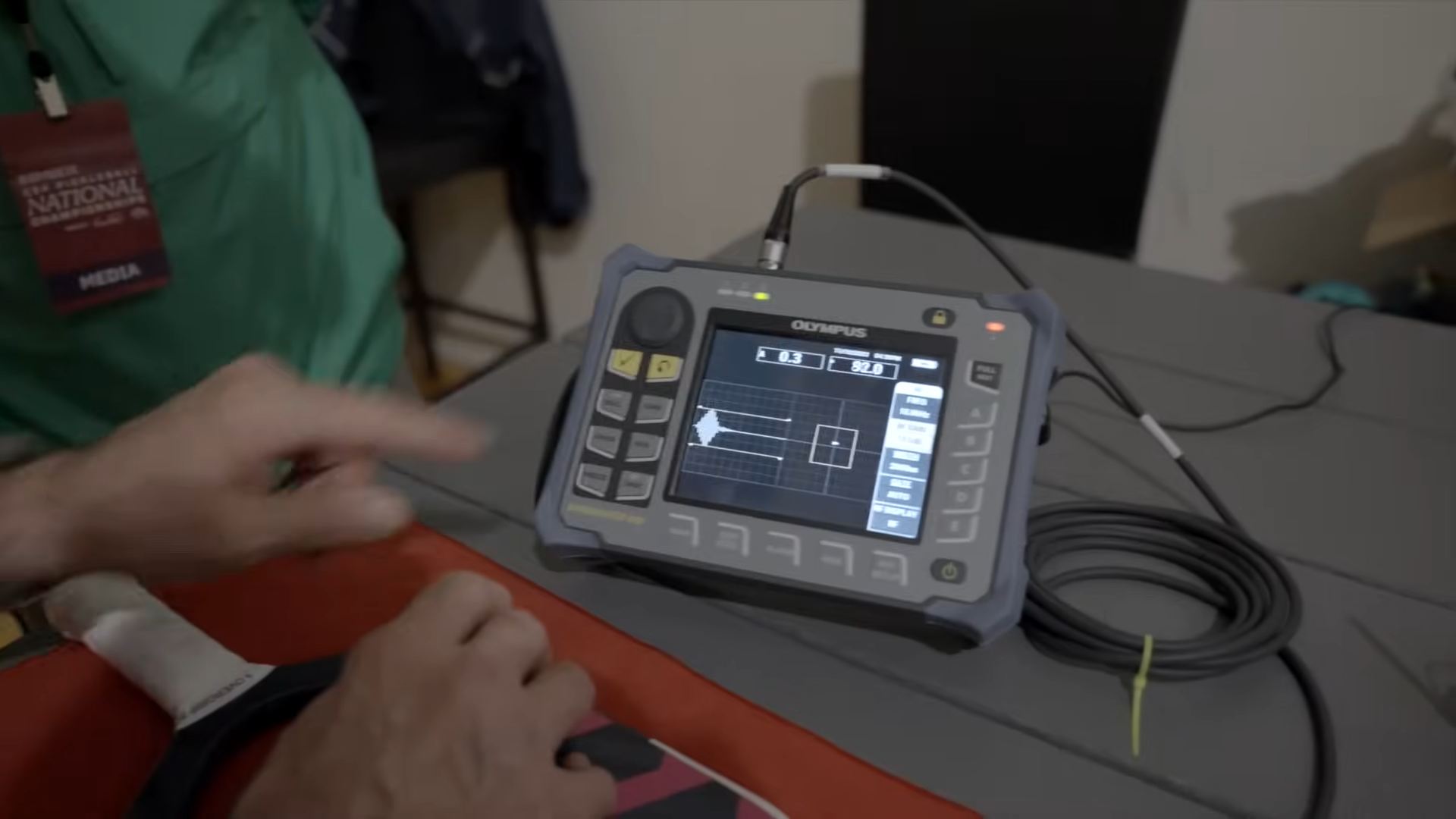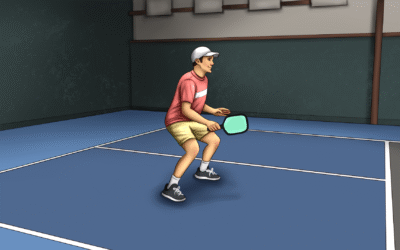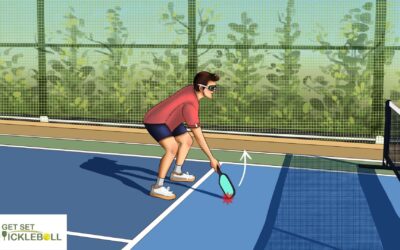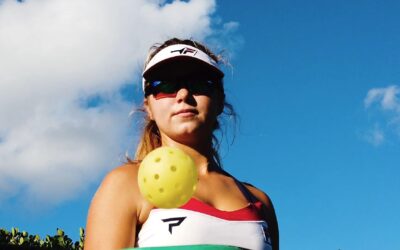Pickleball is more than just a sport. For many of us, it is a community, a passion and indeed a way of life. With its rapid growth and tremendous popularity, the integrity of the game lies in the core line of adherence to standards and ensuring the fairness of the sport. For instance, let’s consider this recent update where USA Pickleball banned some big names due to non-compliance with PBCoR requirements. This clearly indicates a stark reminder of how standardization is critical for maintaining the decorum of the sport. The USA Pickleball does this work for you. This article will simply walk you through numerous aspects of the testing process such as standardization of equipment, player performance testing, the paddle certification procedures, and a lot more than you anticipate in the sections lying ahead. So, whether you’re a player investing in the right equipment, a manufacturer striving for certification or a person who wants to get the inside scoop of the pickleball testing process, this is the ultimate guide you’ve been searching for.
The History of pickleball testing process
Let’s delve into some interesting aspects of the pickleball testing process! Do you know how this profound game testing process has been evolving over decades. Well, it is time to dig into history.
It’s hard to imagine now, but back in 1965, when pickleball was first invented, players had to do with whatever they could find. Paddles and balls were decided on the spot, and games often had unpredictable and curious results. But as the sport grew, the need for standardization became undeniable. By the 1980s, USA Pickleball began implementing early equipment standards to help create consistency across the growing sport. Fast-forward to today, and testing has become a scientific art. I must say, paddles, balls, courts, and nets are all subjected to exacting standards that ensure fairness and quality. What started as a way to bring order to the pickleball sport has evolved into a process that supports the integrity and future of pickleball, guaranteeing that the game remains true to its roots, while also evolving with the times
USA Pickleball – The National Governing body for the sport of Pickleball in the USA.
As the official governing body for pickleball in the United States, USA Pickleball plays a crucial role in preserving the sport’s integrity. From developing the official rulebook to organizing tournaments and certifying equipment, it does everything. One pivotal role undertaken by USA Pickleball is overseeing the testing process for equipment in officially-sanctioned tournaments. By standardizing the paddles, balls, court, and net dimensions, the body assures that the players compete under the same given circumstances without any specific benefits over others.
Understanding the pickleball testing categories
The USA Pickleball testing process involves two primary categories –
-
Equipment testing
-
Player performance testing
It’s time to examine the key areas of the USA Pickleball testing process. The consideration of specific criteria under each, rigorous evaluations, individual capabilities of players, we unveiled every aspect underneath.
Equipment Testing
This huge area of focus will evaluate the equipment used, namely, the paddles, the balls, the nets and courts to ensure they meet certain stringent specifications.
Paddle specifications
Material and dimensions: According to the USA Pickleball standards, the paddle must be constructed of a rigid, non-compressing material and have a striking surface free from holes, rough texturing, or any excessive features that allows the player to perform spin on the ball. Moving on to the dimensions, the combined length and width of the paddle with the inclusion of any edge guard or butt cap, cannot exceed 24 inches, with the length capped exactly at 17 inches. The standard manual also makes it clear that there aren’t any restrictions adopted in terms of thickness and weight of the paddle.
Surface Roughness:
The test ensures that the paddle doesn’t appreciate any sort of friction characteristics or surface roughness which can be analysed in two simple ways. The official body sets the maximum limit for roughness as 30 micrometres on Rz readings and 40 micrometres on Rt readings. The readings are almost witnessed in six different directions. Now, you’ll wonder what exactly these readings depict? The height difference between the highest and lowest point in each of the five sections is generally referred to as total roughness, or Rt. Whereas, the average of all the values calculated on Rt readings is provided with Rz value. This can be measured either through Starrett SR160 or SR300 Surface Roughness Tester.
To measure the frictional characteristics of a paddle, another interesting test titled A coefficient of friction test comes into picture. It basically plays a role to measure the interaction between the paddle surface and the ball to analyse the friction generation by the paddle. In order for the paddle to pass this test, it should exhibit the maximum kinetic coefficient of friction value of < or = to 0.1875.
Previously, surface roughness tests were conducted using mechanical stylus-type testers to measure the height difference between the highest and lowest points on the paddle surface. However, with the introduction of gritty molded resin paddle referred to as “raw carbon”, USA Pickleball has begun migrating to 3D optical scanning technology. The new optical scanning platform purchased by the independent lab National Technical Systems (NTS), provides a more precise characterization of paddle texture and its interaction with the ball using green light interferometry technology to determine S-values, paving way for more detailed surface analysis.
Dwell time and spin impact:
A crucial yet often overlooked factor in paddle performance is dwell time. Dwell time is the amount of time the ball stays in contact with the paddle face. A longer dwell time allows for greater spin and control, while a shorter dwell time enhances the speed of the ball.
Since spin has become a controversial aspect in competitive pickleball, USA Pickleball now closely monitors dwell time to ensure fairness.
Reflection Test:
In generic terms, the test which measures the glossiness or reflective nature of the paddle. According to USA Pickleball, a paddle cannot be approved with extensively high glossiness which many at times can create issues in the game. Keeping in mind the negative consequences like vision problems, the body has decided that any paddle exceeding the measurement of 80 GU under the testing of Surface Gloss meter tester 0-200 GU will fail the reflection test.
Deflection Test:
This test, on the other hand, is adopted to assess the deflecting nature of the paddle. It is evident that a paddle with immense deflection might provide greater power leading to unfair advantage in the gameplay. This test will provide a precise overview by evaluating how the paddle responds under force. The average paddle defection set by the USA pickleball standards is less than or equal to 0.005 inches. How does this work? As part of the test, a load of 3 kg is placed on top of the paddle’s surface to detect its deflecting nature.
Paddle weight and balance testing:
The Wilson Baiardo tune machine is a device used for measuring pickleball paddle weight, balance, and swing weight. It measures the total weight for power, balance points for stability, and swing weight for inertia control, helping players have a comfortable edge over paddles. By testing the weight distribution aspect, players can achieve great precision and control during the matches.
Ultrasonic Testing:
Another crucial innovation in paddle testing is the use of ultrasonic bond testing, a technique borrowed from the aerospace industry to examine the structural integrity. Ultrasonic Testing helps in detecting delamination, disbonding, and crushed core materials within the paddle. It tests paddle durability over extended use and prevents it from providing unintended power advantages due to hidden structural flaws. The Olympus BondMaster 600M is one of the primary ultrasonic testers used in the NTS lab to evaluate these issues, helping USA Pickleball maintain fair play across all certified paddles.
PBCoR Requirements:
USA Pickleball set a new standard for paddle specifications in 2025, and some big-name paddles did not make the cut. Banned paddles included the JOOLA Perseus Mod, Gearbox Pro Power Elongated, and the ProKennex Black Ace series, which all exceeded the Paddle/Ball Coefficient of Restitution (PBCoR) limits. What are PBCoR limits? Simply put, it measures the reinforcement delivered by a paddle towards the ball. We must have definitely come across the term “Trampoline Effect”. Likewise, if the PBCoR is high, it clearly paves way for the ball to bounce off the paddle with insane speed. In simple terms, they deliver too much power.
Currently, according to the latest regulations, the limit for PBCoR is set to 0.44. At this limit, less energy is retained in the game, hence making it sufficiently fair and controllable. Probably, most of you have been wondering how it is determined. The rebound velocity is computed by measuring through dropping a ball onto a paddle relative to its inbound velocity that is the speed of the ball before hitting.
PBCoR = Vrebound/ Vinbound
Ball Specifications
Injection-Molded vs Roto-Molded Balls:
Pickleball balls are manufactured using two different techniques, and the type of ball used can significantly affect gameplay. Injection-molded balls are softer, more flexible ones, allowing deeper interaction with the paddle surface. The potential for spin is generally high due to prolonged dwell time. On the other hand, roto-molded balls are firmer and faster, with less dwell time. Some examples for roto-molded balls are Dura & Franklin X-40.
Material and dimensions:
There are specific standards to pickleball in terms of the material used and its size. The ball must be made of a durable material with a smooth finishing surface. The ball cannot show a mix and match of colours. There should be one uniform colour used with 26-40 holes and manufacturers logo/name on the surface of the ball. The size requirements consist of 2.87 inches to 2.91 inches in diameter and the out-of-round diameter variance cannot exceed 0.51 mm. Unlike paddle, there are some specifications for the weight of the pickleball. The ball can weigh only between 0.78-0.935 ounces.
Bounce:
A perfect bounce determines the strength of a ball. This is one important criterion that pickleballs need to pass to get into the approved list of equipment. As per the standards, when a pickleball is dropped from a height of 78 inches onto a granite surface, the ball must have a bounce of 30-34 inches. Also, the test is generally performed at a temperature of 70-degree Fahrenheit.
Compression:
The test will evaluate the ball’s ability to compress and return to its original shape when pressure is applied. The result of the test should showcase an average compression of <43 LBF. This is done by placing a ball between two flat, parallel plates to record the response of the compression This helps in maintaining a consistent bounce, providing uniformity in gameplay.
Radar Gun Technology:
Radar Guns, widely used in Major League Baseball (MLB), are now being explored in pickleball to measure ball impact speed, inbound and outbound speeds, calculation of exit speed ratios and spin rates. This technology aids players, coaches and manufactures in refining techniques, validating equipment performance and ensuring consistency in game regulations.
Acoustic Testing:
Pickleball is not just about speed and spin, it is also a game of finesse and sound plays a key role in paddle testing. The Sound pressure level (SPL) hitting the paddle is generally measured in decibels (dB). The frequency spectrum is analysed to detect excessive pop. By regulating sound characteristics, USA Pickleball ensures that no paddle generates an excessively loud or powerful “pop”, which could indicate hidden performance-enhancing aspects.
For a hands-on look at equipment testing in action, check out this link.
Net and Court Specifications
Material and Dimensions:
The net should be made of any mesh fabric material that mainly doesn’t allow the ball to pass through it. The legal standards also say that the total length of net should be 21 feet 9 inches and the total height accounts 30 inches from top to the bottom edge. The referee should ensure that there is no draping of the net onto the court. If left unnoticed, the ongoing rally will result in a replay.
Court Specifications:
Asphalt or concrete base are generally acceptable material for pickleball courts. Additionally, the USA Pickleball also states that a total playing surface of 34*64 is preferred. Some pickleball court amenities that could come in handy are nets, divider netting, court benches, spectator seating, shade shelters and more.
Conclusion
The USA Pickleball testing process is the foundation of guaranteeing reasonableness, consistency, and uprightness in the game. From paddle certification to player performance assessments, each step is carefully intended to keep up with exclusive expectations for equipment and interactivity. Testing systems become vital with pickleball development as far as popular trends, each play at both the nearby and competition level guarantees it’s an even fight on the two closures, clearing a path for future developments that this interaction makes. With that knowledge comes how it explains everything, but even better it helps to settle the players, manufacturers, and even the die-hard fan navigate and truly internalize what competition entails. I am sure that with all this knowledge in hand, you’re now ready to see the game from a whole new perspective, especially one where every paddle, ball, and court is tested to perfection.
To explore this topic in greater detail, visit this source






0 Comments